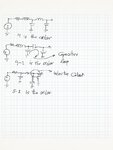iVenky
Advanced Member level 2
- Joined
- Jul 11, 2011
- Messages
- 584
- Helped
- 37
- Reputation
- 76
- Reaction score
- 35
- Trophy points
- 1,318
- Location
- College Station, Texas
- Activity points
- 6,124
How to find out the order of a complex circuit
What's the easiest method to find out the order of a complex circuit consisting of inductors, caps and resistors? I know that there are many methods but I want the easiest one.
What's the easiest method to find out the order of a complex circuit consisting of inductors, caps and resistors? I know that there are many methods but I want the easiest one.
